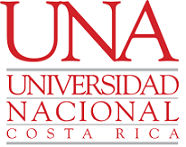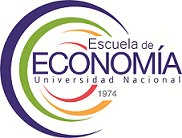Envíos
Lista de comprobación para la preparación de envíos
Todos los envíos deben cumplir los siguientes requisitos.
- La petición no ha sido publicada previamente, ni se ha presentado a otra revista (o se ha proporcionado una explicación en Comentarios al editor).
- El fichero enviado está en formato Microsoft Word para efectos de diagramación.
- Las figuras y tablas están en formato editable.
- El art´ículo no supera las 6 000 palabras.
- Ha añadido direcciones web para las referencias.
- El uso de la copia exacta del original (DE UNA TABLA, IMAGEN, ETC.) o su adaptación, puede requerir autorización escrita por parte del propietario de los derechos DE AUTOR, por lo que es responsabilidad del autor investigar el tipo de autorización que se requiere y adjuntarla.
- De ser aceptado el manuscrito en esta revista, es obligatoria su publicación aquí.
- Cualquier conflicto de intereses ha sido declarado en el apartado de metadatos.
- Ha cumplido con los principios éticos de la investigación.
-
Se ha brindado la información sobre el aporte de cada autor al manuscrito, conforme a las instrucciones para los autores, y los códigos que aparecen a continuación:
- A- Financiamiento
- B- Diseño del Estudio
- C- Recolección de datos
- D- Análisis Estadístico e interpretación de resultados
- E- Preparación de manuscrito
- F-Otro: especificar.
- Si esta enviando a una sección de la revista que se revisa por pares, tiene que asegurase que las instrucciones en Asegurando de una revisión a ciegas han sido seguidas.
-
Enviar firmado, el documento Carta de originalidad y Licencia de cesión de derechos de autor, que se despliega al final de este párrafo o bien lo puede encontrar en el sitio de la Revista en el bloque de menú izquierdo. Este debe ser escaneado con las respectivas firmas y enviado por correo electrónico a la dirección de correo electrónico de la revista economiaysociedad@una.ac.cr. A continuación, el documento mencionado: https://goo.gl/6M3r99
- El texto cumple con los requisitos bibliográficos y de estilo indicados en las Normas para autoras/es, que se pueden encontrar en Acerca de la revista.
Artículos (Sección arbitrada)
Se publican artículos que incluyen revisión por pares y revisión de estilo (revisión filológica).
Nota Técnica (Sección arbitrada)
Los artículos incluyen revisión por pares y revisión de estilo (revisión filológica).
Aviso de derechos de autor/a
Esta publicación está adscrita a Creative Commons; deben respetarse sus atribuciones y restricciones.
Los autores/as que publiquen en esta revista aceptan las siguientes condiciones:
- Los autores/as conservan los derechos de autor y ceden a la revista el derecho de la primera publicación, con el trabajo registrado con la Licencia Creative Commons Atribución-NoComercial-CompartirIgual 4.0 Internacional, que permite a terceros utilizar lo publicado siempre que mencionen la autoría del trabajo y a la primera publicación en esta revista.
- Los autores/as pueden realizar otros acuerdos contractuales independientes y adicionales para la distribución no exclusiva de la versión del artículo publicado en esta revista (p. ej., incluirlo en un repositorio institucional o publicarlo en un libro) siempre que indiquen claramente que el trabajo se publicó por primera vez en esta revista.
- Se permite y recomienda a los autores/as a publicar su trabajo en Internet (por ejemplo en páginas institucionales o personales) antes y durante el proceso de revisión y publicación, ya que puede conducir a intercambios productivos y a una mayor y más rápida difusión del trabajo publicado.

Revista Economía y Sociedad by Universidad Nacional is licensed under a Creative Commons Reconocimiento-NoComercial-CompartirIgual 4.0 Internacional License.
Creado a partir de la obra en http://www.revistas.una.ac.cr/index.php/economia
Declaración de privacidad
Los nombres y direcciones de correo-e introducidos en esta revista se usarán exclusivamente para los fines declarados por esta y no estarán disponibles para ningún otro propósito u otra persona.








